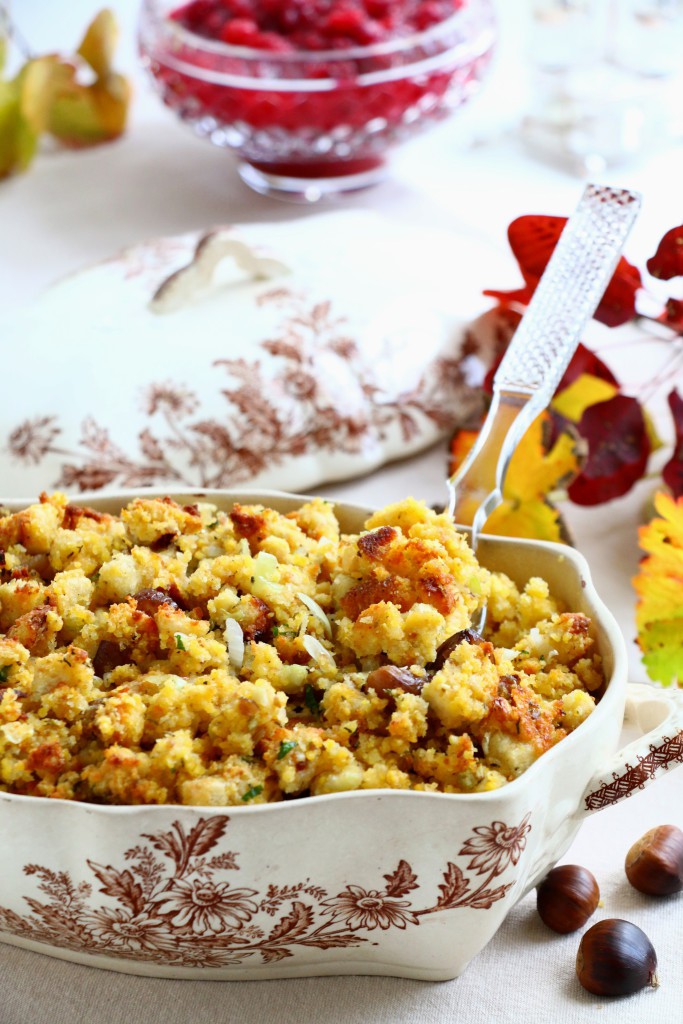 This is the dish that means Thanksgiving to me. It’s a recipe handed down by my mother and I treasure it as much for that as for its taste. It’s a family-heirloom, with roots in my mother’s Texas childhood, though she learned to make it for herself with the help of the Good Housekeeping cookbook she was given as a wedding present. It had a ‘this is how you do it’ Thanksgiving menu, she tells me, and she followed the whole elaborate plan as close to the letter as she could for that first Thanksgiving she and my father shared.
This is the dish that means Thanksgiving to me. It’s a recipe handed down by my mother and I treasure it as much for that as for its taste. It’s a family-heirloom, with roots in my mother’s Texas childhood, though she learned to make it for herself with the help of the Good Housekeeping cookbook she was given as a wedding present. It had a ‘this is how you do it’ Thanksgiving menu, she tells me, and she followed the whole elaborate plan as close to the letter as she could for that first Thanksgiving she and my father shared.
It’s the cornbread that makes the stuffing. Mixed with a roughly equal amount of dried bread cubes, the still-moist cornbread adds the slight sweetness and fragrance of maize, and a slight crunch that makes for an excellent texture. Fragrant with herbs and moist with cooked onions and celery, it’s a lighter and fluffier stuffing than most – substantial, but not stodgy. It keeps you coming back, though, and I can’t guarantee you won’t overdo it, as people mostly do. You need to make more than you think to allow for leftovers.
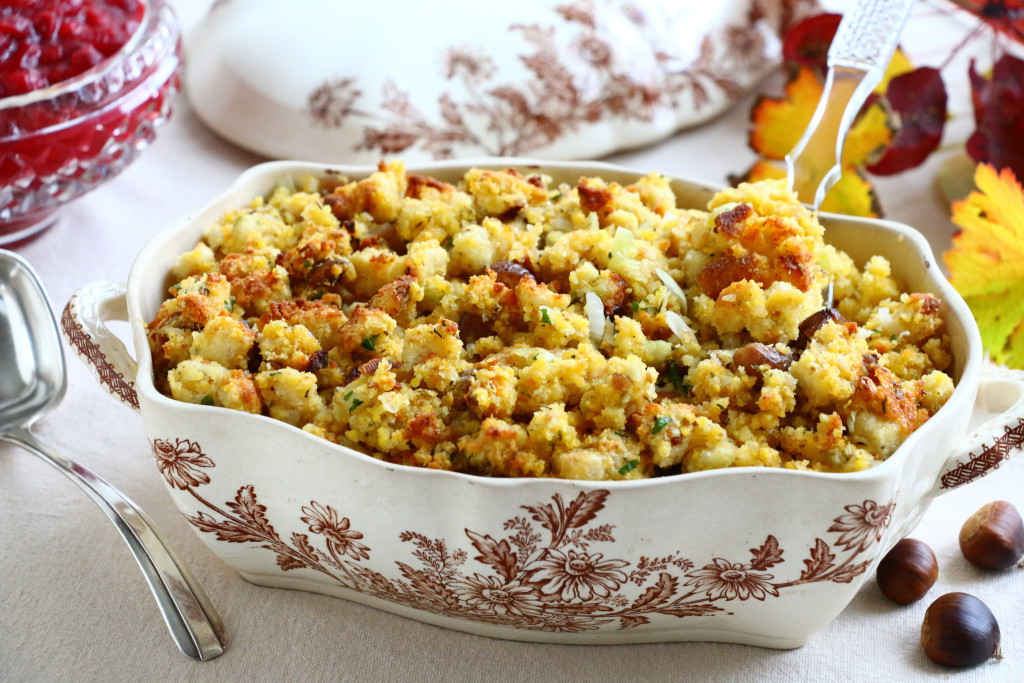 Over the years, my mother would sometimes add cranberries, but mostly it was chestnuts (or occasionally other nuts), and every once in a while some cooked sausage when the local pork house was in its heyday. All were delicious, though I am partial, like my mom, to the chestnut version. They seem the perfect embellishment with the traditional bird and cranberry sauce.
Over the years, my mother would sometimes add cranberries, but mostly it was chestnuts (or occasionally other nuts), and every once in a while some cooked sausage when the local pork house was in its heyday. All were delicious, though I am partial, like my mom, to the chestnut version. They seem the perfect embellishment with the traditional bird and cranberry sauce.
For those still to be initiated, cornbread is a slightly sweet ‘quick-bread’ enriched with egg and butter, and typically leavened with baking soda or baking powder and buttermilk — so not a true yeast bread, and not quite a soda-bread, either. It’s more cake-like than scone-like, and more moist. It’s made with yellow, white or occasionally blue cornmeal. Cornmeal is ground, dried corn-kernals, somewhat like polenta (not what the British call ‘cornflour’ and Americans call ‘cornstarch’). Stone-ground meals vary in grade, fine to coarse. Some cornbread recipes (including the one I share here) combine cornmeal with plain flour, as those made solely with cornmeal have a coarser and drier texture. Usually cornbread is baked about 5-8cm (2-3 inches) thick and cut into squares or rectangles to serve warm, but sometimes it’s baked in muffin tins.
Cornmeal has a long history, rooted in Native American culture, where its uses were and are many and creative. It was taken up by settlers and pioneers who found cornmeal usefully available, portable, cheap and long-lasting. Corn could be dried on the cob and bundled together by its husks for easy storage and transport. It could be ground as needed, the meal made into porridge, or fried as ‘hush puppies’, or cooked as bread in a skillet over open fire or in an oven with lard or bacon dripping, if one had it.
There are regional differences, but originally it was a basic staple that kept hunger at bay, often without any more to season it than salt. In more plentiful times eggs, milk, molasses, honey or sugar were added. Cornbread today tends to be sweeter than I remember it from childhood, and embellishments like corn kernals, cheese and jalapeños, bacon and green onion, or even blueberries for a breakfast muffin, are quite common.
Cornbread ties me to something beyond Thanksgiving. It was a formative taste, along with fried chicken and okra, tamales and enchiladas, scrapple, Grandmom’s stew, confetti ice cream, and my mother’s peach cobbler and pecan pie. My mother brought the cornbread habit with her to southern New Jersey when she and my father moved there as a young couple with me in tow. Cornbread was a daily staple for my mother’s family when she was a child; meat – usually fried chicken — was saved for Saturdays. I remember her making cornbread in her heavy, black, cast-iron skillet to give it a good, dark crust. It was the usual accompaniment to the occasional sticky barbecue and more frequent chili in our house (I was shocked when my English husband told me that Brits have ‘chilli con carne’ with boiled rice!).
I buy some medium-ground cornmeal whenever I visit my American family, though we can now buy it in health food shops here in England. When I first cooked Thanksgiving dinner here, back in the early 90s, there was no cornmeal to be had anywhere, so my stash was imported by suitcase, along with a can of pumpkin, and a bottle of Karo syrup for the pecan pie (and by the way, I still can’t get corn syrup here).
That was my first attempt at Thanksgiving in England. We had about 20 British and other European Thanksgiving virgins around to our very small house for the full works: a Norfolk Black turkey (plus an extra boned-breast), cornbread stuffing in quantity, cranberry sauce in the face of all the odds (I tried several shops before I found two bags that had to be picked over with care), green beans, mashed potatoes, and a beautiful gravy made with stock I’d simmered from scratch a few days earlier when I should have been working on an essay. For dessert I went all out on pumpkin pie, pecan pie with my precious Texas pecans, and a cherry pie made from jarred morellos imported from Poland. I don’t think anyone had room to budge from the odd assortment of tables we crammed together, and I remember having to slither between the backs of chairs to serve. It was more like a sit-in than a Norman Rockwell scene, but it was fun, and I dispelled the myth that pumpkin pie is made with slices of pumpkin, and managed to convert several people to cornbread stuffing.
I am cooking Thanksgiving in England again this year for the first time since that attempt nearly 30 years ago. It’s been a long time, but it’s an ordinary work day for friends and family here, and for several years it was a perk of my job to lend a hand at Thanksgiving dinners hosted by the institution I worked for. These were nice occasions, and my American colleagues and I enjoyed the chance to celebrate and got some gentle amusement from the endearing mistakes made by our British hosts – the Fourth of July streamers and balloons for decoration instead of autumn leaves and pumpkins, the dense grey stuffing that always got left on the plate, and one year an outlandish pie made of Jello and fruit cocktail (they never did get the pies right, alas, but they tried very hard and we were charmed and grateful).
Thanksgiving memories have a flavour. The complete picture may not stay in focus, but feeling attaches to certain details. Some years are gleaned dimly by flashes of political outbursts, weather ambushes and washing-up arguments. Some are vividly and happily more present: the childhood years with cousins when food bored us and all we wanted was to escape the table with its careful cloth and run riot; Aunt Kathy’s coconut, marshmallow and mandarin-orange ambrosia, as elegant as she in her turquoise tunic; the year in Hawaii when Amy and I fought sand and cigarette butts for our beach picnic of Cornish hen and a melting pumpkin pie; the one in California when we all went quiet because the food was so good; and the year I spent with a TV dinner bought standing in line with stressed out grocery shoppers, me feeling lonely but smug – look folks, no hands!
Last year was the loveliest, when we gathered in North Carolina to celebrate our parents’ big wedding anniversary, their move from New Jersey, and Thanksgiving, in one. Kitty made the cornbread and I assembled the stuffing under Mom’s supervision, and Mom made her pecan pie with pecans sent as a present from Texas relatives. We all had our jobs and they didn’t feel like work and everything came together more calmly and harmoniously and deliciously than I have ever known it, with the warmth at table that we always long for and may suspect in lesser years of being a sentimental myth. But it really happened that way.
Thanksgiving 2016 feels disrupted, highly charged, poignant, necessary. I feel less sure today of what it means, this holiday celebrated by a nation of immigrants to acknowledge gratitude to those who acted from common humanity. My delayed feast this weekend is for English friends who’ve never celebrated Thanksgiving, so the mood will be different from a family communion on home turf. The conversation will linger no doubt on Brexit, and on Putin, Trump and Boris Johnson, “all blond, all dangerous”, the humour might go. I’m imagining a party game where we quote and misquote from No Country for Old Men: “Where’d you get this turkey?” “From the gettin’ place”… .
Maybe I am getting too old for this country, for these two countries I belong to, and don’t belong to. I had thought I was living in one kind of world, and it turns out I’ve been living somewhere else. But I’m still thankful. Amidst all the uncertainty I’m sure about one thing: hatred and fear are never healed with hatred and fear. Maybe if we sit down at a table together and graciously share something good, we can see the humanity in each other. I’m not ready to give up on that hope. Meanwhile, I’ve got cornbread to make.
RECIPES
CORNBREAD STUFFING WITH CHESTNUTS
Adapted from my mother, Fern Donohue’s, recipe
Serves 12
In England, stuffing is a finer texture and rather wetter and more solid than this version. This stuffing is airier and fluffier because the texture of the bread cubes and the cornbread is less fine, and it should be more gently handled to ensure it isn’t overly compacted. Use dried bread cubes and not crumbs, and while the cornbread can be freshly baked, don’t crumble it too finely. Add enough stock to moisten the bread, but don’t overdo it; and give it some time to absorb before adding more, especially if you intend to cook it in the bird. Use your hands to fluff it up as you mix, which will help keep the texture light. And finally, don’t stint on the seasoning; this can take quite a lot of salt and pepper — but do be judicious if you use a salted stock.
To make the cornbread:
Do this on the day you make the stuffing, or a few days ahead — or make it well ahead and freeze it. This recipe makes a large batch for holiday stuffing, but can easily be halved to fit into an 20x20x7.5cm (8x8x3 inch) baking pan, or to make 12 muffins (muffins bake in about 20 minutes).
Ingredients:
- 300g (2 level cups) cornmeal, ideally stone-ground (I used medium-ground yellow cornmeal)
- 260g (2 cups sifted) plain / all-purpose flour
- 50g (¼ cup) caster sugar (granulated)
- 4 teaspoons baking powder
- 1 teaspoon cooking salt
- 500ml (2 cups) buttermilk
- 2 large eggs
- 170g (6 ounces, or 1½ sticks) unsalted butter, melted
Directions:
- Heat the oven to 200C/400F. Butter, but don’t flour, a 20x33x7.5cm (8x13x3in) baking pan. Flouring isn’t necessary as butter on its own makes the crust crustier, which is good for contrast with the soft insides.
- In a large bowl, mix the dry ingredients together with a fork or whisk to blend well. In a measuring cup, whisk together the buttermilk and the eggs, and add both to the bowl with the dry ingredients, but don’t start mixing yet. Add the melted butter to the bowl, and only then mix everything at once, just until the dry ingredients have been absorbed. Don’t over-mix, or the cornbread will be tougher and flatter.
- Scrape the batter into the buttered tin and bake for about 25-35 minutes, or until a skewer inserted in the centre comes out clean, and the sides are brown and have shrunk away from the pan. It may crack, and that’s fine. Cool on a rack.
Use 2 tablespoons poultry seasoning if you prefer it to the separate herbs. You can also use ready-seasoned pre-packaged dried bread cubes, in which case halve the salt.
Ingredients:
- 1 medium loaf of bread, stale and unsliced (white or brown), to produce about 300g dried bread cubes
- 1 full recipe cornbread (as given above)
- about 140g tender celery stalks, finely chopped (about 1 heaped cup); plus the pale-yellow inner leaves of the celery (keep the stalks and leaves separate)
- about 280g onion, finely chopped (about 2 heaped cups)
- 140g (5 ounces, or 1 stick plus 2 tablespoons) unsalted butter
- 1 tablespoon fresh parsley leaves, chopped, plus the stems, finely minced (keep leaves and stems separate)
- 2 tablespoons fresh sage leaves, chopped; or 1 generous tablespoon dried sage
- 1 tablespoon fresh fresh thyme leaves, or 2 teaspoons dried thyme
- 2 teaspoons celery salt
- 2 teaspoons sea salt (or 1 teaspoon cooking salt)
- 1 teaspoon black pepper
- about 450g (1 pound) cooked unsweetened chestnuts, coarsely chopped (vacuum-packed or canned are fine)
- 600-700ml (about 2½ to 3 cups) unsalted chicken or vegetable stock (if using salted stock, reduce seasoning salt to 1 teaspoon)
- First, organise the bread cubes: buy an unsliced sandwich loaf and leave it out for one, or even better, two days, to go slightly stale. This makes it easier to cut. Slice the crusts off the loaf on all sides. Then slice the loaf lengthwise into long slabs a bit over 1cm (½ inch) thick. Stack a couple of these long slices and cut them into a generous 1cm (½ inch) strips, and then into a generous 1cm (½ inch) cubes. Dry them in a slow oven for 15-20 minutes under completely dry, mixing them through once or twice for evenness, but do not allow them to colour. Cool in the pan on a rack.
- Make the cornbread, cool it, and then crumble it fairly coarsely into your largest mixing bowl, leaving a few larger pieces for texture. Set aside.
- Cook the onion and celery: in a large frying pan or saucepan, cook the chopped onion and celery in the butter over medium-low heat for about 10 minutes, or until soft and translucent. Don’t allow the vegetables or butter to colour. Stir through the minced parsley stems, and set the pan aside to cool to room temperature. Add all remaining ingredients except the stock to the cooked vegetables, stir well, and then decant into the bowl with the bread cubes.
- Mix the stuffing and add the stock: Using a large spoon or clean hands, gently mix the cooked vegetables and all the herbs and seasonings into the dried bread cubes. Then add the crumbled cornmeal and the chopped chestnuts, again using a light touch with your hands or the spoon, to evenly mix everything. Take your time and try to keep some air in the mix and refrain from compacting it together. When you have as even a mix as you can get, start adding the stock about 100ml at a time (a scant half-cup), mixing as you go, until you’ve added about 500ml (about 2 cups). At this stage let it sit for about 5 minutes to absorb, and then check its texture with your fingers: you’re looking for a softer feel to the dried bread cubes, but not a squidgy mush. If it’s still dry, add more stock and allow it to rest again. If you intend to cook the stuffing inside the bird, leave it a little drier as it will absorb juices from the bird. Refrigerate if not cooking straight away. The stuffing can be assembled the day before as long as you keep it cold, and separate from the bird.
- To cook the stuffing: 1): If cooking the stuffing inside the bird, stuff the bird loosely at the neck and central cavity just before cooking — don’t compact it as it will expand on cooking — and make sure the stuffing reaches an internal temperature of 165F /75C before serving. It’s also important to remove any uneaten stuffing from the carcass and refrigerate it separately. 2): The stuffing also has a lovely flavour cooked separately from the bird (the method recommended for optimum safety by the US Department of Agriculture and Food Standards Agency). To do this, butter a large baking dish and fill it loosely with the stuffing mixture, again being careful not to over-compress the stuffing into the dish. Cover with buttered parchment and then foil, and bake at 190C/375F for about 30 minutes (adjust up or down if your oven temperature is set higher or lower to accommodate other dishes.) Remove the foil and parchment and cook until golden brown on top, about another 15 minutes. Serve piping hot.
For other cornmeal recipes on Crumbs on the Table, see:
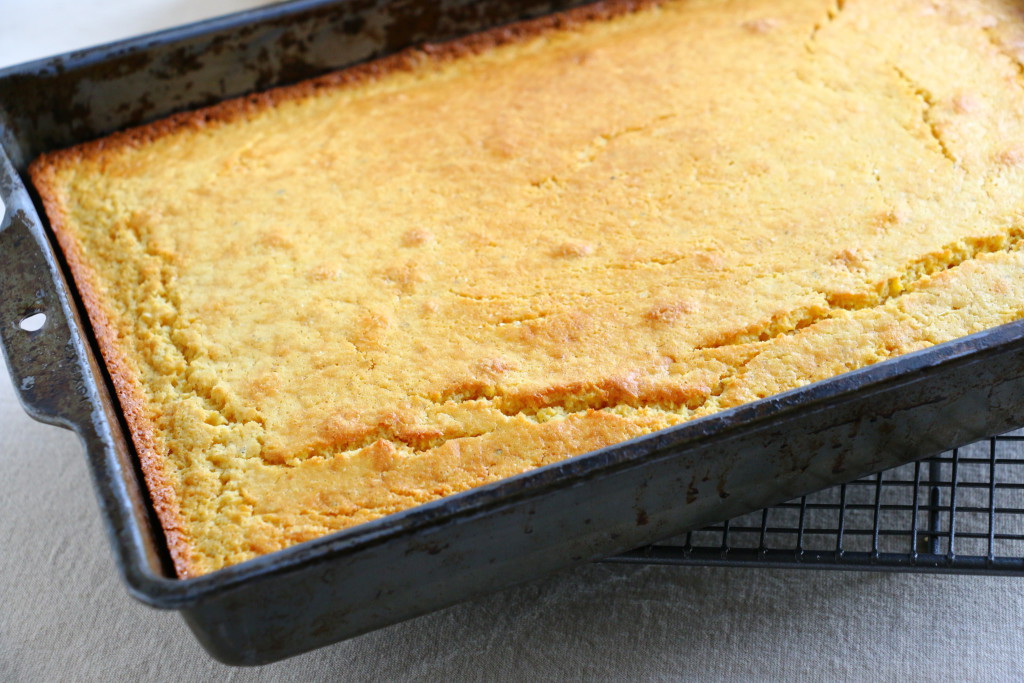
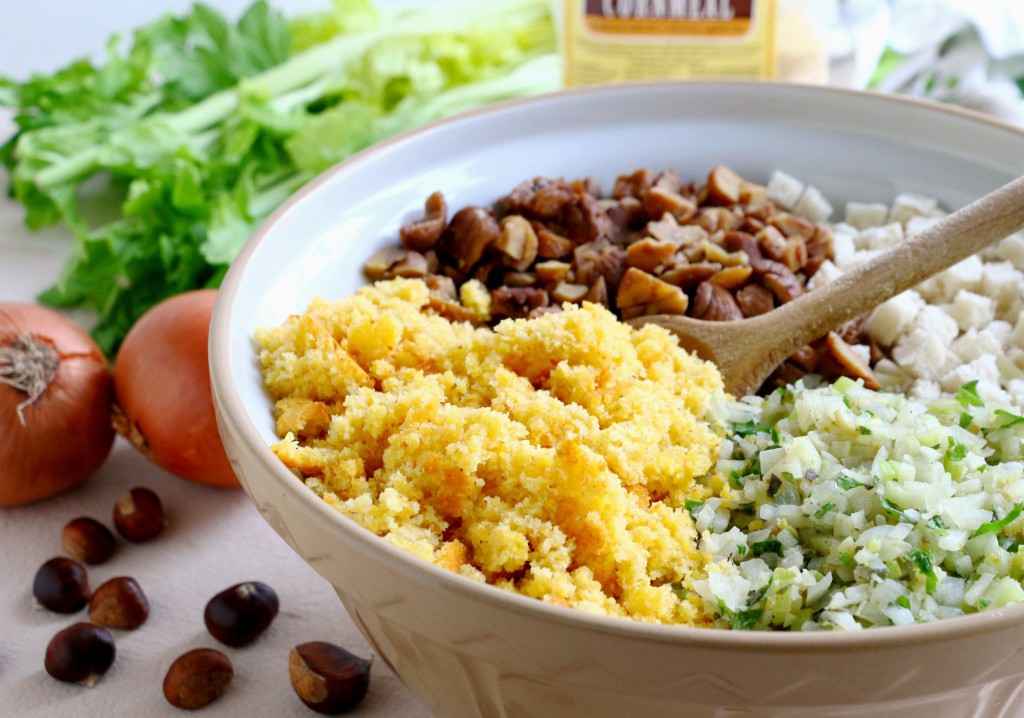
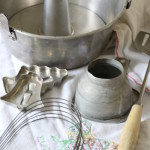

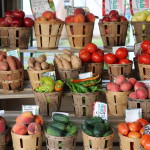
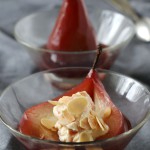
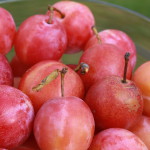
 Tour D’Argent: a remembrance of things past at today’s prices
Tour D’Argent: a remembrance of things past at today’s prices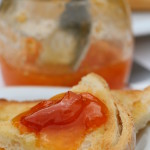 Apricots, les abricots
Apricots, les abricots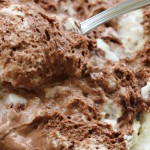 I used to cook in a piggery
I used to cook in a piggery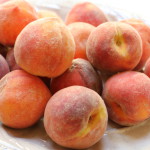
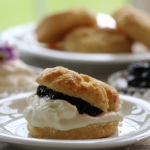


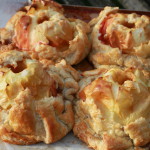
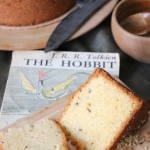 Seed cake and story
Seed cake and story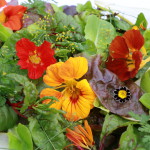
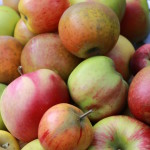
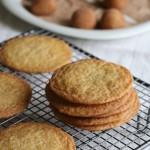
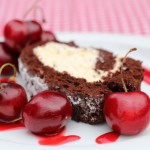
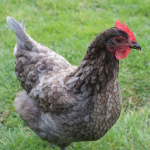
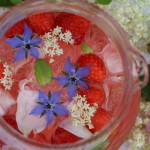
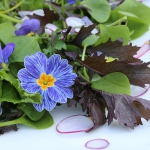

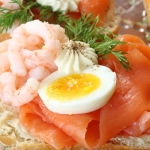
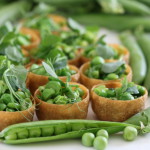

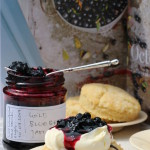
 Easter is late this year
Easter is late this year
I’ve just read your Thanksgiving column which was like a journey into my own Southern past with the added reflections of being an immigrant myself, married to an Englishman and always trying to re-create the Thanksgivings of my Mississippi childhood. I have been bewildering my English family and friends with cornbread dressing and sweet potato casserole for three decades now but I loved reading your Thanksgiving stories. Thank you for the memories, wisdom, brio and beautiful writing.
And an improved version of the Chez Panisse Almond tart!
Dear Carla, I am very touched by your kind and generous comments, and by what you shared of your journey and memories. I smiled at the bewilderment, so familiar. Thank you for reading, for your lovely response, and for the pleasure and inspiration you’ve given me and so many others with your stories — and through the beautiful world you’ve created here in England. It’s been for me the best of both worlds, moulded with such grace, harmony, warmth and a remarkable woman’s vision.